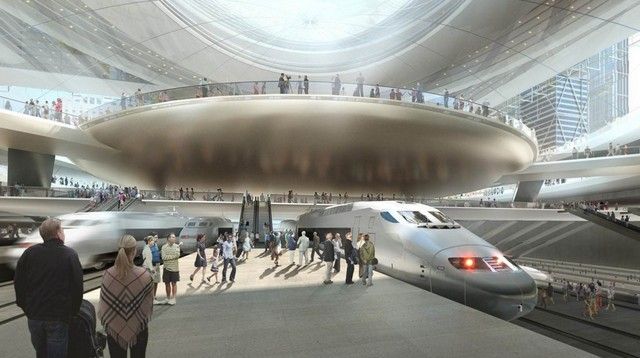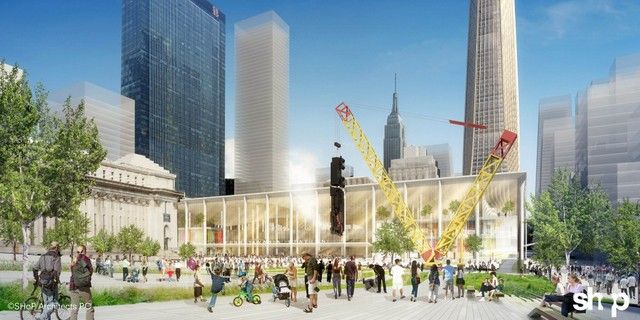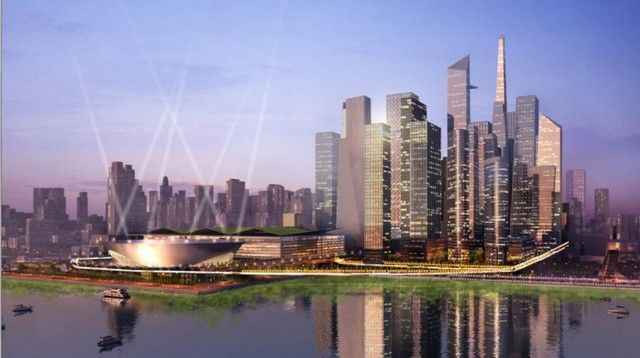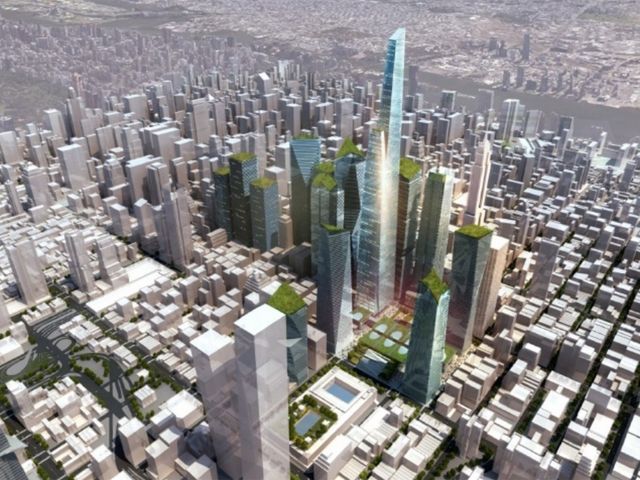Last Chance to Catch NYC's Holiday Notalgia Train
We met the voices of the NYC subway on our nostalgia ride this weekend!



Rendering for a new Penn Station by Skidmore, Owings & Merrill (SOM)
Yesterday, the New York City Council voted 47-1 to limit the permit for Madison Square Garden to just 10 years. MSG’s 50 year permit expired earlier this year. The owners of the Garden were pushing for a permit that would last for perpetuity, the Bloomberg administration aiming for 15 years. Madison Square Garden could apply for a renewal when the next term is up, or it could find an alternative location. This is actually the fourth incarnation of Madison Square Garden (the first gave its namesake, located at Madison Square Park), so it has a history of moving even if reluctant now.
The Municipal Art Society (MAS) and the Regional Plan Association have been largely behind the advocacy efforts to move Madison Square Garden, branded under the campaign, “The Alliance for a New Penn Station.” New York City needs a world-class train station (and a world-class arena), they argue. 600,000 people pass through Penn Station a day, making it the country’s busiest train station. MAS goes as far to say it’s the busiest transit hub in the Western Hemisphere. While we jokingly created an Untapped Guide to Penn Station (which still contains remnants of the original McKim, Meade & White station!), the cramped, underground maze that is Penn Station is both outdated and over-capacity, serving three times more passengers each day than when it opened.
So far, the public debate over Penn Station has largely been a political issue with Christine Quinn, the loudest supporter for a new Penn Station. Other mayoral candidates, such as Bill de Blasio and John C. Liu also supported a move for Madison Square Garden, while William C. Thompson and Joseph Lhota sided with Madison Square Garden. This has not stopped The Municipal Art Society to launch a design challenge for a new Penn Station, in which architecture firms Diller Scofidio + Renfro with Josh Sirefman, H3 Hardy Collaboration Architecture, SHoP Architects and Skidmore, Owings & Merrill (SOM) participated.

Diller Scofidio + Renfro

SHoP

H3 Hardy Collaboration Architecture
Madison Square Garden’s case is mostly on legal terms. They own the land, so they want to dispose of it as they see fit. Joel Fischer, Madison Square Garden’s executive says, “Not only can we not be forced to move, but we’d still have the right, even if there was no arena, to build an office tower, with no obligation to free up space for Penn Station.” Others fear that a new station would only repeat the mistakes of overblown transit projects like The Fulton Street Transit Center and the Calatrava World Trade Center Hub.
The motivation behind a move is largely economic and transit-oriented. Besides a world-class station, the Alliance hopes a new Penn Station will improve local and regional transit, enhance pedestrian accessibility, and enable a great new civic space to emerge. In a report released ten days ago, the Municipal Art Society proposed a Penn Station Redevelopment and Revenue Capture District to incentivize and unlock the economic and real estate value in the area–up to $1.3 billion based on their models.

Proposed a Penn Station Redevelopment and Revenue Capture District
While plans for upgrading Moynihan Station have been underway, the Alliance for a New Penn Station believe it “must be coupled” with improvements to Penn Station to be effective. Challenges to the area include aging office buildings (pre WWII and 1960s-era) and outdated zoning.

H3 Hardy Collaboration Architecture
One solution proposed in 2007 by the Department of City Planning proposal is via upzoning, which can be achieved in part by transferring unused or surplus development rights to reach 24 FAR (Floor Area Ratio), up to 30 FAR in some areas. This would put the Penn Station district within the same range as nearby Hudson Yards development (20-33 FAR). MAS proposes a similar funding structure to Hudson Yards, through establishing a revenue-capture entity like the Hudson Yards Infrastructure Corporation. Such an entity would receive bonus payments, and potentially payments in lieu of property taxes, mortgage recording taxes and sales taxes. Bonds would be issued against these revenue streams to fund capital improvements, as the Hudson Yards Infrastructure Corporation has done to finance the 7 line subway extension and park extensions.
As for Madison Square Garden, MAS has a potential site: The Morgan Postal Facility on 9th to 10th Avenue.
Join us for a tour of the Remnants of Penn Station:
Tour of the Remnants of Penn Station
Get in touch with the author @untappedmich. See vintage photos of Penn Station in its heyday and of its demolition.
Subscribe to our newsletter